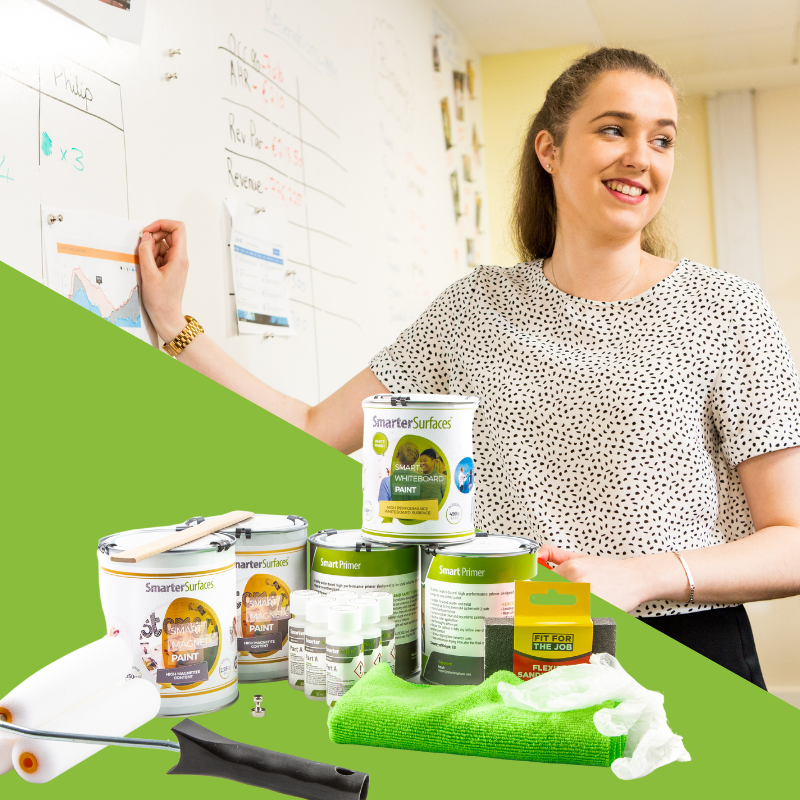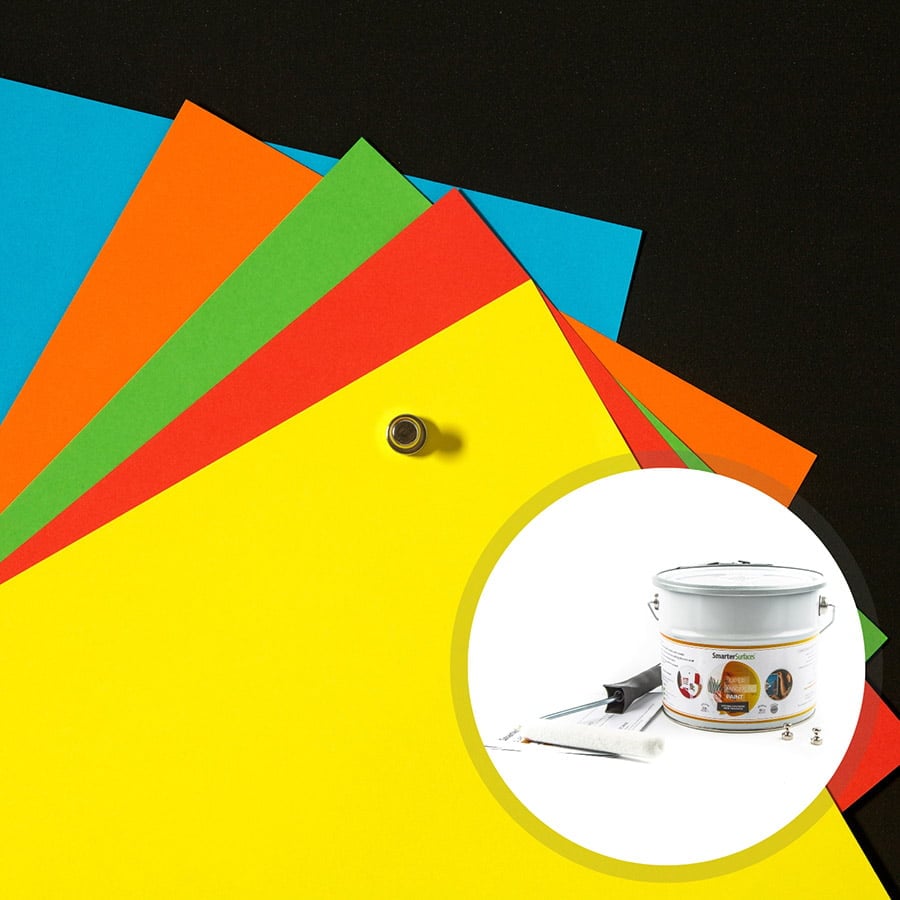Which Is The Strongest Magnetic Paint?
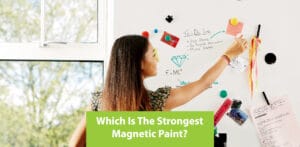
- Introduction
- How Magnetic Paint Works?
- How Strong Is Magnetic Paint?
- Magnetic Products - Top Strong Magnetic Paint For Office/Classroom
- Factors That Affect Magnetic Strength
- Key Takeaway
Magnetic paint has revolutionized the way we think about functional wall surfaces, transforming ordinary walls into interactive spaces where you can display artwork, organize schedules, or create dynamic presentation areas.
Whether you're designing a creative workspace, setting up a classroom, or simply want to add versatility to your home office, magnetic paint offers an innovative solution that combines practicality with aesthetic appeal.
But not all magnetic paints are created equal. The strength of a magnetic surface can vary depending on the product you choose. The answer to the question of which is the strongest magnetic paint - its Magnetic Plaster which is effectively a very strong magnetic paint applied like a plaster (but it can also be applied as a paint)
Let's read and understand which magnetic paint delivers the strongest to the weakest holds.
How Magnetic Paint Works?

Magnetic paint is a specially formulated liquid that has magnetite dispersed throughout the paint. These metallic particles are what make the surface "ferromagnetic," meaning it can attract magnets.
Magnetite and surface attraction together determine the performance of your magnetic surface. The higher the concentration of the magnetite (iron oxide) in the paint, the higher the magnetic strength.
Think of it like this: the more magnetic particles packed into each square inch of your painted surface, the more "grip points" a magnet has to hold onto. That's why it is important to use multiple coats. Each coat contains more magnetic particles and increases the magnetic receptivity of your wall. A top tip here is avoid cheaper products that use iron powder a low cost material which is prone to oxidisation and not nearly as effective.
How Strong Is Magnetic Paint?
The answer to how strong is magnetic paint is that the strength of magnetic paint varies significantly based on its magnetite content, products on the category of commercial grade wll range from 55% to 75% magnetite. There are many magnetic paints out there with as low as 25% magnetite or iron powder if its below 40% the performance will be poor.
1. Magnetic Paint

Good quality standard Magnetic Paint contains around 55% magnetite, which means it is a medium-strength magnetic product. You can hold up 4 sheets of 80gsm A4 paper with one small magnet - sufficient for light-duty applications like displaying photos or notes.
If you increase the number of coats painted, from three to six, you will see an increase in the number of pages that can be held up. In this case, you can hold up 8 pages of 80gsm paper with one small magnet, and you can hold up heavier items too. To increase the weight the surface will hold just increase the magnet size or number of magnets.
Magnetic Paint is a cost-effective solution that comes with a 10-year performance guarantee. It is grey in colour and can be topcoated with Smart Whiteboard Paint in White or Clear for a multi-function surface.
2. Super Magnetic Paint

Strong options, such as Super Magnetic Paint with 60% plus magnetite content, which means it has strong magnetic receptivity. With this paint, you can hold up 5 sheets of 80gsm A4 paper. It is suitable for office environments and classrooms where moderate magnetic strength is required.
This product is applied in four coats and is stronger than our regular magnetic paint because it is made from a higher-grade raw material. It has a similar consistency to plaster, which is why it is possible to add more magnetite content to this product compared to Smart Magnetic Paint.
Super Magnetic Paint can be topcoated with Whiteboard Paint in White or Clear, or any of our Dry Erase Wallcoverings range. You can topcoat your magnetic walls in any color you like.
3. Magnetic Plaster
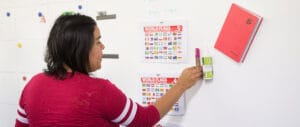
For maximum strength, Magnetic Plaster with 75% magnetite content delivers the most powerful performance, capable of holding 8 or more sheets of A4 paper per small magnet. It will hold very heavy items with larger magnets.
It is the strongest magnetic paint that represents nearly double the holding power of normal magnetic paint. You can topcoat Magnetic Plaster with any product from our dry erase range.
It is ideal for high-traffic commercial spaces, collaborative work areas, or anywhere that demands reliable, heavy-duty magnetic functionality.
Note: Neodymium (rare earth) magnets work best with all types of magnetic paint, as regular household magnets often lack sufficient strength to achieve optimal performance.
Magnetic Products - Top Strong Magnetic Paint For Office/Classroom

This section of the blog provides a detailed guide about the strength of magnetic paints. You can confidently create magnetic surfaces that are tailored to your personal needs.
Product 1: Black Magnetic Paint
Black Magnetic Paint is a budget-friendly option to create a strong and durable magnetic surface. With 55% of magnetite, it is ideal for organizing spaces and enhancing productivity in schools and offices.
- Coverage: 96 sq ft (84 fl oz) and 32 sq ft (32 fl oz)
- Color: Black
- It can hold 3-4 sheets of A4 paper per small magnet.
- It is eco-friendly with low VOC, solvent-free, PFOA and PFOS free, and isocyanate-free.
- It is the best magnetic paint for walls, plaster, concrete, wood, metal, doors, or any smooth surface.
- Requires 4-5 coats for best results. Can be painted over with desired colors using a white, water-based primer for best results.
Product 2: Magnetic Whiteboard Paint - White
Magnetic Whiteboard Paint White creates surfaces that are both magnetic and writable, combining two essential functions in one product. If someone asks which magnetic paint is best for classrooms, this paint is the perfect example. It has 55% magnetite and its features include:
- Coverage: 65 sq ft (64.24 fl oz) and 21 sq ft (32.12 fl oz)
- Color: White gloss finish
- It has dual functionality with both magnetic receptive and dry-erase writable.
- Easy to clean with standard whiteboard cleaners.
- Suitable for all smooth surfaces, including plaster, wallboard, concrete, wood, and plastic.
- Ideal for meeting rooms, classrooms, and collaborative workspaces where both functions are needed.
Product 3: Magnetic Whiteboard Paint - Clear
Clear Magnetic Whiteboard Paint maintains your wall's original color or design while adding both magnetic and writable functionality with 55% magnetite. This innovative solution allows complete design freedom. Its features include:
- Coverage: 65 sq ft (64.24 fl oz) and 21 sq ft (32.12 fl oz)
- Color: Transparent gloss finish
- It is essential to apply primers over porous surfaces to seal and hide the dark magnetic color from high magnetite content.
- It can be applied over any paint color, wallpaper, or decorative finish and has a long-lasting performance with proper maintenance.
- It can hold 4-5 sheets of A4 paper per small magnet.
- This product is ideal for branded spaces, designer interiors, and homes where aesthetics are paramount.
Product 4: Super Magnetic Paint
Smarter Surfaces Super Magnetic Paint features 60% plus magnetite content, making it one of the strongest magnetic paint, stronger than regular magnetic paint options. When you’re in a dilemma, which magnetic paint is best for classrooms, this is the best example. Its key features include:
- Coverage: 65 sq ft (84.5 fl oz)
- Color: Black with matte finish
- The paint has low VOC content (less than 0.13%), is solvent-free, and is free from PFOA, PFOS, and isocyanates.
- The paint can hold up to 5 sheets of A4 paper per small magnet.
- Can be topcoated with any color or whiteboard paint.
- Suitable and one of the best magnetic paint for walls, plaster, concrete, wood, metal, and doors.
Product 5: Magnetic Plaster
Want a strongest magnetic paint? Smarter Surfaces Magnetic Plaster is the strongest magnetic option with 75% magnetite content. You can topcoat Magnetic Plaster with any product from our dry erase range. Key features include:
- Coverage: 65 sq ft (128.5 fl oz)
- Color: Matte Black
- Superior magnetic strength compared to paint options.
- A thick application creates a robust magnetic surface.
- Best for high-traffic areas requiring maximum magnetic holding power.
- Can be overcoated with any color finish.
- It is suitable for walls, plaster, concrete, wood, or any smooth surface.
Strength and Performance Metrics
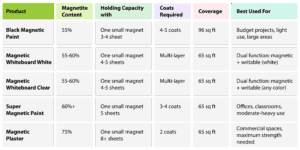
Factors That Affect Magnetic Strength

While the magnetite content in your paint is the foundation of magnetic strength, it's far from the only factor that determines how well your magnetic surface will perform.
Understanding these variables can mean the difference between a wall that barely holds a single piece of paper and one that confidently displays multiple items without slipping. Let's explore the key factors that influence the magnetic strength of your painted surface.
1. Magnetite Content and Magnets Used
The percentage of magnetite in your paint is the primary determinant of magnetic strength. For example, Smarter Surfaces magnetic products range from 55% magnetite in standard magnetic paint to 75% in magnetic plaster.
High-quality magnetic paints use finely milled magnetite that is distributed evenly throughout the formula. This uniform distribution creates a consistent magnetic field across your entire surface, eliminating weak spots where magnets might lose their grip. A thicker application with more concentrated particles per square inch will provide stronger magnetic attraction than a thin, sparse coating.
Use neodyium magnets and use larger magnets or multiple magnets to hold heavy weights. A top tip
2. Number of Coats Applied
The most controllable factor in achieving strong magnetic performance is the number of coats you apply. Each additional layer adds more magnet particles to your surface, multiplying the magnetic holding power. Most manufacturers recommend a minimum of three coats, but many users find that four to six coats deliver better results.
Think of it as building up magnetic "depth." With just one or two coats, you have a thin layer of magnetic particles. By the time you apply five or six coats, you've created a bed of ferromagnetic material that provides much stronger attraction.
The optimal number depends on your chosen product's magnetite content and your specific holding requirements.
3. Application Technique
How you apply magnetic paint matters just as much as what you apply. Proper technique ensures maximum magnetic density and even distribution across your surface. Here are the critical application factors:
3.1. Stirring Thoroughly
Stirring is essential before and during application of the best magnetic paint for walls. Magnetite is heavy and settle quickly to the bottom of the container. If you don't stir continuously (ideally every few minutes during application), you'll end up with weak paint at the top of the paint container and overly concentrated material at the bottom, resulting in uneven magnetic strength.
3.2. Surface Cleanliness
Dust, grease, or loose paint particles will prevent proper adhesion and create weak spots in your magnetic surface. Contamination can interfere with the paint's ability to form a strong, uniform bond. Thoroughly cleaning sanding your wall before any primer or paint application ensures the best possible foundation and sanding between coats is important.
3.3. Application Method
The way you apply the paint affects particle distribution. Rolling tends to provide the most even coverage, while brushing can create streaks with varying magnetic density. Using a high-quality foam roller helps achieve smooth, uniform coats that maximize magnetic performance.
3.4. Drying Time Between Coats
Rushing the process by applying subsequent coats before the previous layer has fully cured can trap moisture and prevent proper particle bonding. This not only weakens the magnetic effect but can also cause adhesion problems and eventual paint failure.
3.5. Surface Preparation
The foundation beneath your magnetic paint significantly impacts its performance, even though this factor is often overlooked. A properly prepared surface ensures good adhesion, allows for optimal paint thickness, and provides a stable base for the heavy magnetic coating.
3.6. Surface Smoothness
The smoothness of the surface affects how evenly the paint applies and how much material you can build up. Rough, textured walls require more paint to fill in valleys and create a smooth magnetic surface. However, extremely rough surfaces may create an uneven magnetic field. Lightly textured or smooth surfaces provide the most consistent results. Sanding between each coat is a top tip to get a smooth finish.
3.7. Primer Application
Primer creates an ideal bonding surface for magnetic paint. Using a primer before applying magnetic products can help them stick better and improve overall durability. A quality primer also seals porous surfaces, preventing the base wall from absorbing expensive magnetic paint.
4. Environmental Conditions
Temperature and humidity during application and curing can significantly affect magnetic paint performance, though these factors are often underestimated.
4.1. Application temperature
While applying the paint, the temperature should be within the manufacturer's recommended range (between 50°F and 85°F). Cold temperatures slow the drying and can prevent magnetic particles from settling properly into the layer. Excessive heat can cause the paint to dry too quickly on the surface while remaining wet underneath, trapping particles in suboptimal positions.
4.2. Humidity levels
Humidity affects both application and curing. High humidity extends drying time, which can allow heavy magnet particles to settle or sag before the paint sets. Very low humidity can cause surface crusting that traps wet paint underneath, potentially affecting particle distribution and final magnetic strength.
4.3. Ventilation
Ventilation during drying ensures proper curing without compromising the finish. Good airflow helps moisture evaporate evenly, preventing the surface problems that can reduce magnetic effectiveness.
Key Takeaway
The magnetic paint market has evolved significantly, offering solutions for virtually every need and budget. Whether you're seeking the absolute strongest surface possible or a more balanced approach that combines strength with other features, there's a magnetic paint product designed to meet your specific requirements.
By understanding your priorities—strength, cost, functionality, or aesthetics—you can confidently select the magnetic solution that transforms your walls into the interactive, productive surfaces you envision.
Remember that regardless of which product you choose, your final results depend heavily on proper application technique. Always stir the paint thoroughly and frequently, apply the recommended number of coats, allow adequate drying time between layers, and invest in quality neodymium magnets rather than standard household magnets. Even the strongest magnetic paint will underperform if applied incorrectly or paired with weak magnets.
Smarter Surfaces products are used and trusted by top brands such as Google, Virgin Media, and Coca-Cola.


